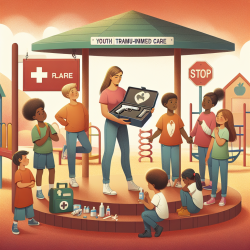Introduction: The Importance of Non-Prescription Syringe Sales
As a practitioner in the field of public health, you are likely aware of the significant role that access to sterile syringes plays in preventing the transmission of HIV and hepatitis C among injection drug users (IDUs). The research article "Pharmacy Participation in Non-Prescription Syringe Sales in Los Angeles and San Francisco Counties, 2007" offers valuable insights into the factors that influence pharmacy participation in non-prescription syringe sales (NPSS) and highlights the importance of educational efforts to enhance this public health strategy.
Key Findings from the Research
The study found that only 42% of pharmacies in Los Angeles and San Francisco reported engaging in NPSS, with a higher participation rate in San Francisco (81%) compared to Los Angeles (28%). Interestingly, the research identified that pharmacists' perceptions of the importance of syringe access for preventing HIV were a significant factor influencing NPSS. Pharmacies that were part of a chain were more likely to participate in NPSS than independent pharmacies.
Implementing Research Outcomes to Improve Skills
For practitioners looking to improve their skills and contribute to public health, the following strategies can be implemented based on the research findings:
- Enhance Educational Efforts: Organize workshops and seminars for pharmacists to educate them about the importance of syringe access in preventing HIV and HCV. Highlight the positive impact of NPSS on public health and address any misconceptions.
- Promote Chain Pharmacy Involvement: Encourage chain pharmacies to participate in NPSS by showcasing successful case studies and providing incentives for involvement. This can help increase the overall participation rate and ensure wider access to sterile syringes.
- Address Barriers in Independent Pharmacies: Conduct targeted outreach to independent pharmacies to understand their concerns and provide tailored support. This may include offering resources for safe syringe disposal and addressing any legal or logistical barriers they face.
Encouraging Further Research
While the study provides valuable insights, there is still much to learn about the factors influencing NPSS participation. Practitioners are encouraged to conduct further research in the following areas:
- Impact of Educational Programs: Investigate the effectiveness of educational programs on changing pharmacists' attitudes and increasing NPSS participation.
- Longitudinal Studies: Conduct longitudinal studies to assess the long-term impact of NPSS on public health outcomes, such as reductions in HIV and HCV transmission rates.
- Geographical Variations: Explore the differences in NPSS participation across various regions and identify factors that contribute to these variations.
Conclusion
By implementing the outcomes of the research and encouraging further investigation, practitioners can play a crucial role in enhancing public health strategies and reducing the transmission of infectious diseases among IDUs. To read the original research paper, please follow this link: Pharmacy Participation in Non-Prescription Syringe Sales in Los Angeles and San Francisco Counties, 2007.










